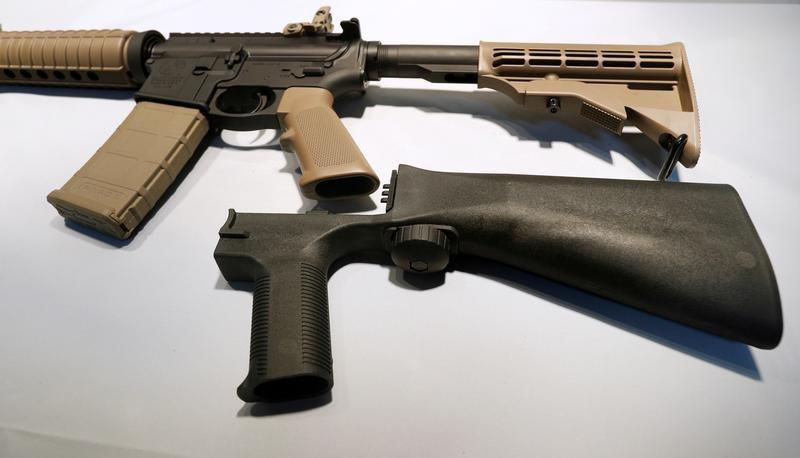The Biden administration on Friday petitioned the U.S. Supreme Court to hear an appeal of a lower court ruling that halted a federal ban on “bump stocks,” with the Justice Department requesting the high court reimpose a ban on the devices until it hears the case.
The Department of Justice (DOJ) on Friday petitioned the U.S. Supreme Court to hear its appeal of the Fifth Circuit’s decision that reversed the ban.
The petition for a writ of certiorari—a formal request made to a higher court to review and potentially overturn a lower court decision—was filed with the Supreme Court by Solicitor General Elizabeth Prelogar on behalf of the DOJ.
That decision “threatens significant harm to public safety,” the DOJ said in the appeal. “Bump stocks allow a shooter to fire hundreds of bullets a minute by a single pull of the trigger. Like other machine guns, rifles modified with bump stocks are exceedingly dangerous.”
Before the Fifth Circuit ruled in favor of Cargill, three other federal courts upheld the bump stock ban. The U.S. Supreme Court declined to review those cases.

More Details
In 2018, the DOJ classified bump stocks as machine guns under the National Firearms Act, reversing a determination made in 2010 that found the devices to be merely accessories to firearms and so not subject to regulations as a firearm.The DOJ’s decision, which went into force in 2019, came after a man used weapons fitted with bump stocks in a 2017 shooting spree in Las Vegas, killing 58 people and wounding hundreds.
The rule change amended the regulatory text by adding the following language: “The term ‘machine gun’ includes bump-stock devices, i.e., devices that allow a semiautomatic firearm to shoot more than one shot with a single pull of the trigger by harnessing the recoil energy of the semi-automatic firearm to which it is affixed so that the trigger resets and continues firing without additional physical manipulation of the trigger by the shooter.”
The final rule also defined “automatically” and “single function of the trigger” since those terms are used in the statutory definition of a machine gun.
Because the final rule classified bump-stock-type devices as machine guns, they fell under the purview of the National Firearms Act and became restricted, with owners being required to destroy the devices or hand them over to the ATF.
Cargill, who was forced to surrender his two bump stocks following the rule change, sued. He argued that the ATF and the DOJ violated the U.S. Constitution by usurping the role of Congress in expanding the definition of a machine gun to include bump stocks.
In January 2023, the Fifth Circuit ruled 13–3 in Cargill’s favor.
“Cargill is correct. A plain reading of the statutory language, paired with close consideration of the mechanics of a semi-automatic firearm, reveals that a bump stock is excluded from the technical definition of ‘machine gun’ set forth in the Gun Control Act and National Firearms Act,” the Fifth Circuit said in its ruling.
The Fifth Circuit ruling stated that semi-automatic weapons fitted with bump stocks don’t fall under the definition of a machine gun because one pull of the trigger corresponds to the firing of a single bullet.
“Without a bump stock or the use of an alternative bump technique, the user must provide manual input by pulling the trigger with the muscles of his trigger finger. With a bump stock, the shooter need not pull and release his trigger finger. But the shooter must still apply forward pressure to the weapon’s forebody in order to maintain the shooting mechanism,” U.S. Circuit Judge Jennifer Eldrod wrote in the opinion. “Again, the manual input remains, even though its form changes.”
Dissenting judges argued that the statutory language is ambiguous enough to support classifying bump stocks as machine guns and that court used “lenity to legalize an instrument of mass murder.”
Lenity is a principle in law that calls for any ambiguity in a criminal statute to be interpreted in favor of the defendant, resulting in a more narrow interpretation of the law.





